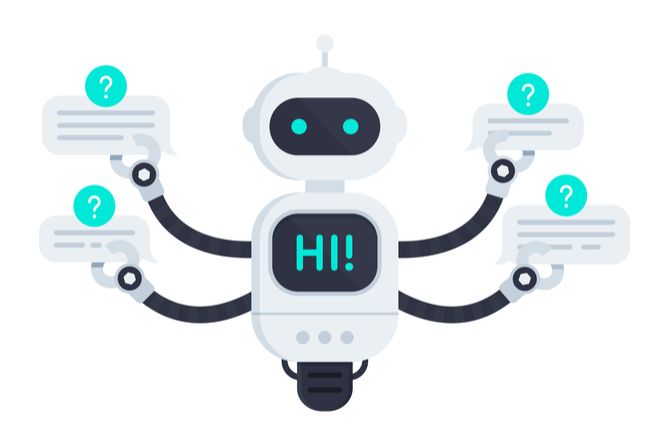The idea of using customer-facing chatbots can be intimidating. If you believe the negative press they are here to steal contact centre jobs. In reality, they should be seen for what they are: making your life easier.
Chatbots, and more broadly AI, are now widely used. In fact, 69% of consumers prefer chatbots for quick communication with brands. British retail giant Marks & Spencer use Twilio’s speech recognition software and Google’s Dialogflow AI tool to transcribe customers’ voice requests and understand their intent.
Mastercard use an AI-powered chatbot to allow customers to make a payment.
We too have helped a large supermarket chain implement Amazon’s Lex to improve incoming call routing by 3x.
“The use of chatbots as a cost-effective way of improving customer experience and service levels will continue to grow. Automated chatbots work best for short and simple interactions. For example, paying a bill could be automated because the customer is getting the same level of service whether they talk to an agent or a bot”
Martin Cross, CTO, Connect Managed Services
 Changing Times
Changing Times
Contact centres have changed. The image of headset-wearing telephone agents is out-of-date. Now agents are expected to be multi-skilled across multiple channels as they communicate with customers through web chat, social media and email, as well as phone.
Contact centres need to embrace new technologies to increase efficiency and make cost savings whilst ensuring customer experience (CX) doesn’t suffer as a result.
Best Uses for Chatbots in Contact Centres
There is negative press around AI and how it might one day replace contact centre jobs. Although possible it’s highly unlikely. Customers will always value a human conversation more than an automated chatbot. Emotional Intelligence is something chatbots will struggle to provide or may never be programmed to deliver.
AI and chatbots should be viewed as another tool to help agents improve customer experience and increase customer loyalty.
1. Replacing IVR Processes
Even the best IVR systems cause customers frustration. The problem is an IVR has a set of predefined rules. When a caller wants something outside of these parameters, their frustration levels quickly rise.
In contrast, with AI you can use Sentiment Analysis. It can quickly identify a customer’s dissatisfaction based on user input using natural language processing (NLP). For example, it could escalate a query if a caller mentions “where is my order,” which may signal frustration.
2. Enhancing Personalisation
One frustration that customers often face is having to repeat information on multiple occasions or trying to be sold something that is unrelated to them. When these things happen, it has a negative effect on CX.
Contact centres capture vast amounts of data from customer interactions. This data must be utilised by being fed into analytics engines to help optimise CX and processes.
Chatbots can help by sharing relevant information with agents across channels. For example, it could make recommendations based on past purchases.
Personalisation can greatly improve CX, customer satisfaction and drive repeat sales.
3. Improving Self-Service
Self-service of common, simple customer queries make sense to free up agent resources for more complex ones. For example, paying a utility bill is a simple interaction that could be automated with predefined rules.
Chatbots can also direct customers to alternative self-service channels such as web forms or use audio capture to auto-fill forms.
A growing number of customers, especially Millennials, prefer to solve their own customer service issue. A phone call is often seen as a last resort. It means your FAQs, forums and chatbots need to be closely monitored to meet this growing trend.
4. More Accurate Call Routing
When receiving calls, Lex can be used to help identify the type of incoming call request and route it to the relevant place. This can be done with a high level of accuracy, e.g. what street or postcode they live in rather than what region. It can share this useful information to the agent so they get useful insight to help deal with the query better.
5. 24/7 Customer Service
Chatbots are not constrained by time zones or public holidays. This always-on customer service meets the growing 24/7 mentality that customers expect. It can also have a positive impact on CX, NPS and churn.
6. Faster Customer Service
A Zendesk study showed 69% of customers attributed their good customer service experience to a quick solution of their problem. Having to explain their problem to multiple people meant a bad customer service interaction for 72% of customers.
Chatbots can answer common queries as well as share information across channels to ensure the customer doesn’t need to repeat themselves.
 Conclusion
Conclusion
A 100% AI-powered contact centre is still a long way off, if at all. While automation can deal with common customer interactions, they are unable to replicate humans when customer queries become more complex. For example, if a customer becomes angry, a chatbot won’t be able to provide human skills like empathy, reassurance and lateral thinking. Not yet anyway! A human will be able to dissolve the situation and provide a personalised solution.
A chatbot is only as good as it is programmed to be. Local cultural alignment is also an important factor that will take time. There will be situations where only a human will do, no matter how advanced a chatbot is.
As we all know, chatbots can bring a higher level of efficiency. Automation frees up agent resources so they can focus more on the complex customer queries and complaints. This is particularly useful as customers demand a quicker, more personalised experience (the Zendesk study shows some interesting statistics on this).
Being more proactive in resolving customer queries rather than reactive can significantly lower customer churn rate. Collaboration with highly skilled agents being supported by chatbots and other AI is the best strategy to deliver the best CX you can provide.
 Changing Times
Changing Times
 Conclusion
Conclusion




